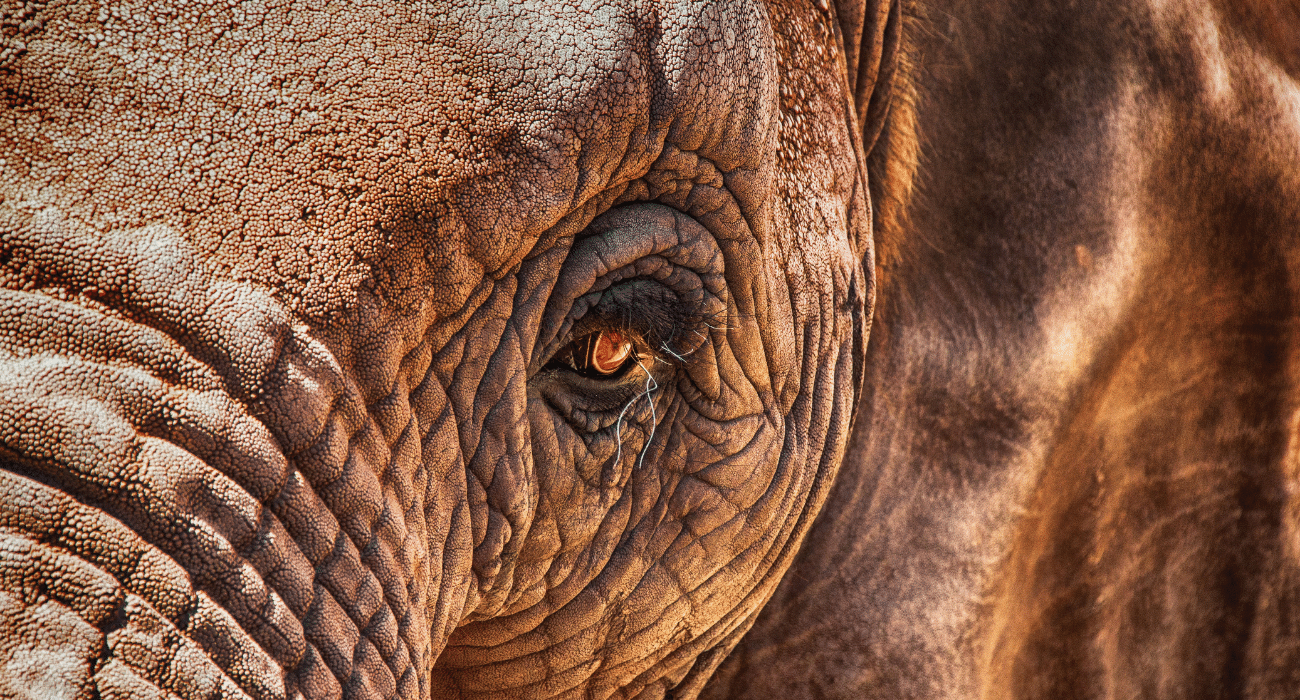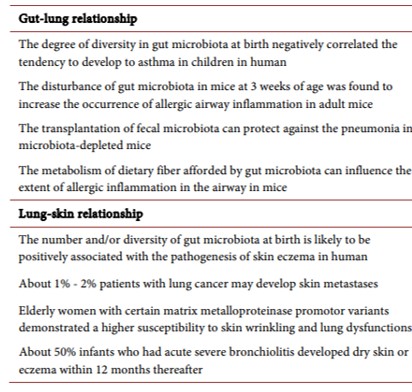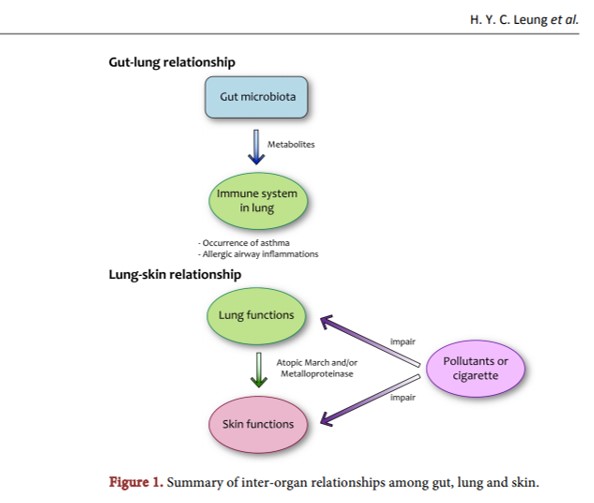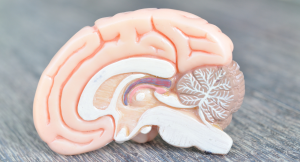(AKA THE RELATIONSHIP BETWEEN OUR LARGE INTESTINES, OUR LUNGS & OUR SKIN)
Often, we forget that our skin is an organ, in fact, our skin is our largest organ measuring roughly 3 to 5kgs of your body weight and 2m2.
Our skin is our first line of defense, protecting us from pathogens, and is an intricate system of removing waste (through our pores). Not only does it protect us from infection, but also extreme temperatures and natures elements. Less obvious functions of our skin include balancing our fluids and synthesizing vitamin D.
Without realising it, we replace our entire top layer of skin (epidermis) every 4 to 6 weeks (which dust mites thank us for). Our Epidermis has layers, our Thick skin areas have 5 layers while our Thin skin areas have 4. Our top layer (or 2) are really just dead skin cells. The way it works is like this:
Proteins and nutrients, we consume, through our diet, are broken down by our small intestine into pieces of proteins and nutrients (like dismantling a tent). These pieces are able to move through cell membranes and are carried to the areas of the body (thanks to our blood supply and circulatory system) where they are needed, EG: Liver or Brain, but in this case, we’re talking about our skin, so the dermal layer of our skin. Once aptly located they are reassembled to create the nutrients and other components to create the matter we are made of (mitosis).
So, we ate some food, and the nutrients traveled through our veins to our capillaries to our lower lays of skin (the dermis) where they were used to create more skin cells. The new cells push up the older cells and as the older cells move away from the nutrient supply, they flatten and turn into dead skin cells. This is how the dermal layer becomes the epidermis layer. Part of the collection of cell types that make up this top layer/epidermis are Langerhans cells which are the cells that actually consume and dismantle invaders on our skin. These cells originate in our bone marrow and are considered part of our immune system.
The dermal layer is full of nerves, capillaries, veins, some hair cells, oil and as well as sweat ducts (we excrete roughly 500ml of water through our sweat glands every day).
This is clearly where most of the action happens.
Our skin retains roughly 5% of our entire blood volume at any given time, and is designed to squeeze that blood back into your circulatory system when we are exercising to feed our muscles that extra bit of oxygen. However, the increase in heart rate ensure that our veins and capillaries are flush with blood, carrying excess heat to the surface to be released – causing a flush look. So, it is easy to see how skin also gets busy regulating our body temp at this time. During exercise or on a hot day that 500ml of sweat can turn into 12L per day. In cold weather our vessels constrict, moving the warm blood to our vital organs, which can cause a blueish colour to our thin skin areas.
This shouldn’t be confused with Cyanosis which is more of an indicator of systemic imbalances in the body, such as heart failure, poor circulation, or/and severe respiratory imbalances. Blood that is depleted of oxygen turns darker in colour.
Since we’re talking now about skin colours, yellowing skin can tell us about the state of our liver because the liver produces bile and the yellow is a result of bile in our blood. Erythema (red skin) can tell us about fever, inflammation or allergies – basically looking at an imbalance in our immune system. Blood carries white blood cells as well as many other immune system soldier-cells to dismantle and dispose of invaders, so when our immune system is working hard, the blood is sent out to war, and the extra pressure from the heart ensures it reaches the dermis layers of our skin, widening our blood vessels to the point where they are more visible through the skin.
Skin colour, in another sense, is all about Melanocytes. Melanocytes are all the same, regardless of skin colour; however, the quantity of Melanocytes define what colour your skin is. The most important thing about Melanocytes is its ability to protect us from the harmful ultraviolet rays of the sun. Ironically, we still need that wonderful sunshine to survive. Our skin contains molecules which convert sunlight into vitamin D. The vitamin is transported to our liver and kidneys where it is made active and at this point it’s called Calcitriol. Calcitiol is used to help make new bone cells.
But, wait, there’s more.
We’ve each got roughly 3’000’000 tiny sweat glands throughout our 2m2 of skin. Some of our sweat glands (like those under our arms, and in our groin area) secrete more than the usual salt, urea, vitamin C, lactic acid and water mix. These glands secrete fat and proteins as well, and when bacteria get involved it turns into a stink fest known as body odour. Another undesirable effect of our skin includes pimples. Superficially these are a result of oil glands secreting oil up through the hair follicles. The primary purpose is to keep our skin and hair soft and lubricated as well as help reduce water loss in dry environments.
And then there are other skin-things like hair and nails.

Now, I realise I’ve given you a lot to take in, but no direct link between the skin and the lungs or large intestine as yet. This is because I believe it’s important that we take time to appreciate all that our skin does for us, and since there is no skin meridian to speak of, it’s not likely that your local reflexologist is going to give you this level of incite. So, let’s take a moment for our skin, and break for a glass of water to help keep it hydrated.
Lung & Skin
In Traditional Chinese Medicine (TCM) they say that the lungs control the skin, which ‘breaths’ via the opening and closing of pores and is responsible for adjusting temperature through perspiration and shivering.
Inge Dougans tells us that our lungs move water down to the kidneys. She also points out that “the secretion of sweat is regulated by the lungs, as they work to scatter water vapour throughout the body to be eliminated via the skin and pores”. There certainly seems to be a connection here. The skin is where the radiant energy of resistance emanates, forming the first line of defense against ‘evil’ and environmental energies such as heat and cold. It is said that flu and the common cold are caused by impairment of chi in the skin. This low resistance against external invasion has links to diseases settling in the lungs and bronchial tract. Pale skin and poor complexion are often seen on patients with weak lungs. Other, more obvious links are around the mouth and nose. Those being the external apertures of the lungs, and the gates of breath. A clogged or runny nose can indicate a dis-ease in the lungs. Personally, I once met with a doctor who informed me of a virus which lives in the nose which causes boils and abscesses, which further links skin and the respiratory system.
Studies have brought forward evidence showing that it is possible that the functional relationship involving the lung and skin can go beyond allergies to include infectious diseases and aging. Allergic responses occurring in one organ can increase the risk of the other in developing non-allergic diseases, suggesting that a functional deficiency in one organ can impair that of another. This connection may also be a result of a genetic predisposition, wherein an individual of a certain genotype would have reduced function in both the lungs and skin. Conceivably, there is a connection to the immune system by cross-talk between mucosal epithelial cell layers in different organs.
Large Intestines & Skin
The large intestine is responsible for eliminating waste (along with the respiratory and urinary system). While I haven’t seen much TCM text that brings sharp focus to the link between our large intestines and our skin, the link is obvious to me. If our large intestines aren’t functioning correctly, we can have a lot of toxicity fermenting in our body, and our body wasn’t designed to have that waste stagnant for prolonged periods. The digestive juices are taken out of the large intestine thanks to a relationship with the kidneys, but over time the waste material can recirculate and cause increased acidity. Additionally, I see a link between the cause of constipation (or diarrhea) and the bacteria in the large intestine vs the bacteria on the skin. Further to that, there is a relationship between the mucus membranes of the large intestine, the mucus membranes in the respiratory system and skin conditions which use puss (white blood cells etc) to expel invaders from the body.
For the large intestine-lung relationship, experimental evidence supports a relationship between the composition of micro bacteria in the large intestines and lung function. It has been suggested that the microbiota of the two organs communicate and somehow influence each other. It appears that large intestine microbiota can change during infancy, but becomes less sensitive to change in later stages of life. For the lung-skin relationship, the pathological relationship between the two organs is becoming evident in regard to allergic diseases, as demonstrated by the phenomenon recent research has uncovered called “atopic march” (an apparent co-occurrence of skin and lung allergies, in that atopic dermatitis in infancy tends to be followed by allergic rhinitis and asthma later in childhood).
Come through for a reflexology treatment, and lets talk about improving your quality of health. My humble home studio awaits.






